6 Practices for Brilliant Ideas

There's no golden formula for coming up with brilliant ideas. Thinking out of the box isn't always easy. We might be stuck in a work environment that doesn't encourage fresh ideas. We might have a project with tight restrictions. Or maybe it's just one of those days where our mind is a complete blank. Creativity is all about connecting our past experiences. This article is all about helping you find these connections. And hopefully by doing so I can help you become a more creative person.
Before you read this article I want to make something clear. If you don't consider yourself artistic or creative you need to get that idea out of your head right now! Everyone is artistic and creative. It's all a matter of being passionate about your work and always continuing to move forward without letting anything intimidate you or hold you back in any way. In the end, the ability to inspire others is more important than talent.
4 Pillars of Creativity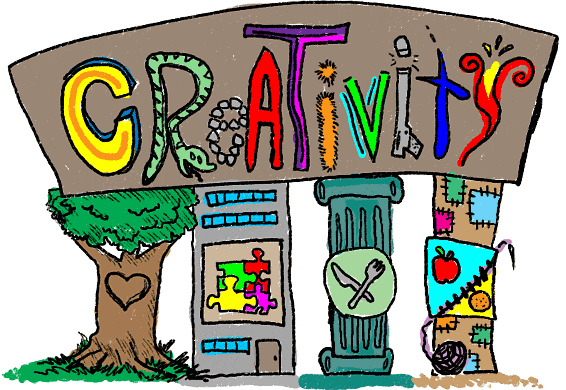
The following pillars hold up and support creativity. Mastery of these pillars is the key to becoming more creative and come up with brilliant ideas! I want to point out that the following descriptions for these pillars can be a bit vague. They'll make more sense if you keep them in mind while reading the core section of this article about the practices.
Passion Is Infectious

Good ideas inspire people and spin clones. You should feel like you can't wait to work on your projects. If people recognize your passion you'll get rewarding feedback. If your clients/audience recognize your passion they will thank you for it. When you're passionate about your work people will sense that and they'll want you to produce it. Passion is essential for making anything discussed in this article work.
Rethink The Business

For a fresh idea to be a good idea, it needs to inspire people. When you genuinely accomplish inspiration, that's when you can say you're rethinking the business.
Cannibalize The World

Pull from the world. Don't just pull from the norm of your industry. Get out of the bubble with what everyone else is doing. For example, if you're a photographer don't just look for inspiration from other photographers. Be influenced by everything you see around you. Cannibalize the rich world of art and substance.
Link The Unrelated

Absorb all mediums. Brilliance exists in the broad search and the clever linkage of one seemingly unrelated thing/event to another. That sort of functional and engaging translation of one graphical language to another, when handled properly, contains a built in punch line or moment of sale. When you see one object which makes you think of another, the two together is an idea.
6 Practices for Becoming More Creative
1. Transfer of Mediums
Brilliant ideas come from isolating the emotion and transferring the residue (our emotional feelings) of something. The transfer of one medium to another can lead you down unexpectedly effective paths. The visual and emotional effects generated by music, art, performance all arise from similar sources of human interpretation.
Here's an example: try thinking about your favorite song. Think about the emotion that song gives you. Does it make you feel happy? Excited? Nostalgic? Try to break down this emotion. Why does it incite this emotion in you? What memories are connected to this emotion? Keep note of the answers to these questions. Now on your next project challenge yourself by attempting to apply your feelings into the creative process. You can apply your feelings to anything, whether it's personal art or a 'boring' corporate website.
Images plant seeds. You know when we come across an old photo from our past, all of a sudden we're brought back to that time? Time and space are linked. Try transferring this emotion into your work. Invite and pursue these shapes that exist in different modes of time and space to influence your work.
Inanimate objects need to be humanized to imbed in the global consciousness. We see it all the time in cartoons; think of Toy Story. We romanticize and fetishize things, objects, and places we love. For example, in our pursuit of technology, we insist on finding ways to make it sexy. Try transferring this human desire into your work. Look at your project carefully and see if you can humanize anything that typically wouldn't have human characteristics.
Here's an example: imagine a picture of a bear. Next, think of a different bear. Now dig deeper and attempt to conjure a third visual of a bear. This is more difficult to imagine. This is the threshold from which original brilliant ideas are spawn.
2. Unexpected Collaborations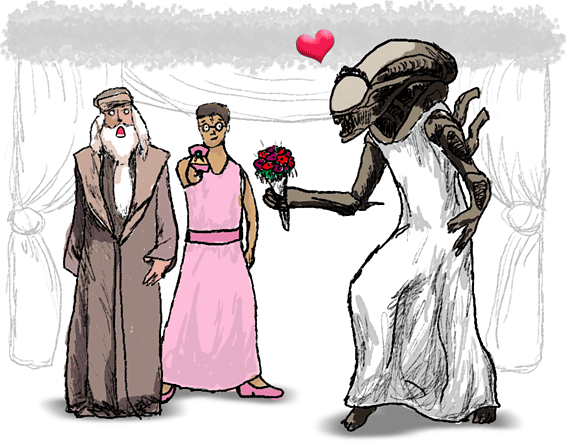
Brilliant ideas come from unexpected collaborations and unions. Collaborations with people from a wide variety of skill sets will also serve to expand your view of what is possible. The result will be a mix of cultural, economic and hopefully creative energy that can offer originality and test your assumptions on how things are done. For example, if you're a photographer try working with someone who has nothing to do with photography such as a dancer. A dancer could provide artistic insight that you could translate into your work.
Expand your horizon by working in styles that you're not good at. Experiment with mediums you've never cared for or felt intimidated by. Explore the work of artists outside of your comfort zone and try to imitate it. There are plenty of inspiration websites out there to help you explore new styles; Behance is a good one.
3. Change Your Perspective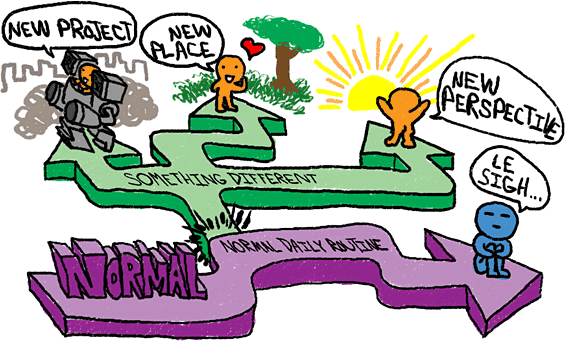
Brilliant ideas come from a change in your perspective. It's 'more efficient' for us to navigate our daily lives with comfortable routines. It's easy for us to rest on our laurels. But breaking routine is what creates excitement in our lives! It's the punchline of our day. It blindsides us and makes us behave differently. Creativity is the opposite of routine.
Try one of these perspective-changing exercises:
- Wear a patch over your eye. You'll see the world differently. Then try bringing this different vision back into your work.
- Stop using drugs like caffeine or sugar.
- Take a shower in the dark.
- Stay up all night or sleep at the opposite end of your bed.
- Wear ear plugs or radically change your musical selections.
- Try to use the opposite unfamiliar hand when creating work.
- Take a different road to work.
- Have a third party set your alarm to wake you up at an unexpected time.
- Work in miniature or unusual aspect ratio.
Changing your perspective could radically change your projects for the better. For example, think about the video game commercials as of late, such as the Titanfall commercial, that shows violent first person shooters with jazzy or orchestrated music playing in the background. Doesn't that stand out more as opposed to playing hard rock or strong rap music? You know, the kind of music that people would normally expect for a commercial like this. If simply the choice of music could provide a different perspective, think about what little thing you can do with your project that could potentially provide a different perspective.
4. The Role of Limitations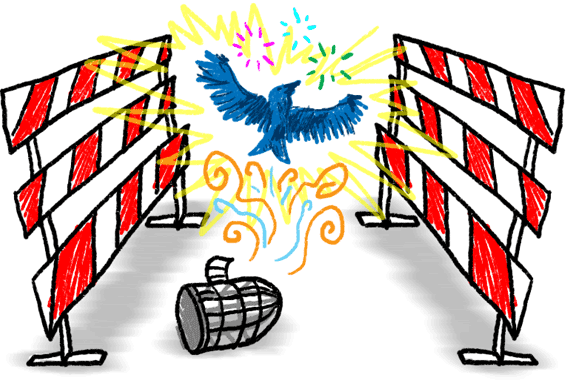
Brilliant ideas come from limitations. Progress has limits. Limitations create style. Having the best and most expensive tools/hardware/software doesn't guarantee the best results. Limitations force you to think of creative solutions to solve a problem.
Think of ways you can limit the tools you're using for your project. If you're manipulating photos (particularly with Photoshop), try doing everything from scratch without using filters or any other special feature. Similarly, with editing video, try to avoid using special effects or any other special feature that automates tasks. You could also try challenging yourself to work in black & white or duo-tone.
Inspiration could even come from a lousy job that you felt held you back. Mozart, for example, wrote jingles for a living. That's where he got inspired to create his masterpieces. Genius comes from ideas, not technique. This relates to what I mentioned in the beginning of this article: the ability to inspire others (with ideas) is more important than artistic skill.
5. The Age of Innocence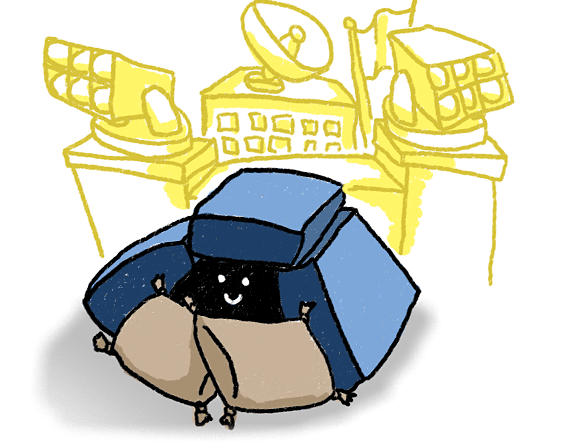
Brilliant ideas come from the age of innocence, the days of your youth. In our daily lives, we work on project after project. We're more or less doing the same thing over and over and over. Shifting gears from one project to the next can sometimes seem impossible. How can we gain a clean perspective from project to project so as to use what we have learned rather than apply an unwanted dynamic gained by redundant patterns of behavior and practice? In other words, what can you do to prevent repeating the same old routine just to get your next project done? You can erase your slate by tracing back to when your mind was clear, back to our age of innocence.
Our age of innocence was when the world was a big mystery. Everything was wondrous and aroused your curiosity. Sometimes it takes an old perspective to open a new one.
Here are some ways to make your age of innocence work for you:
- Rekindle a childhood memory. If you have keepsakes from your youth, take them out and reminisce.
- Explore new software without the use of a manual.
- Attempt to do something you are afraid of, something that's out of your control.
- Collect images that inspire you and then at a later time write a story that links the random images together. Because once you gather the images and put them away you forget about them. When you return you have a fresh perspective and you can write a story about them.
6. Never Forget Your Humanity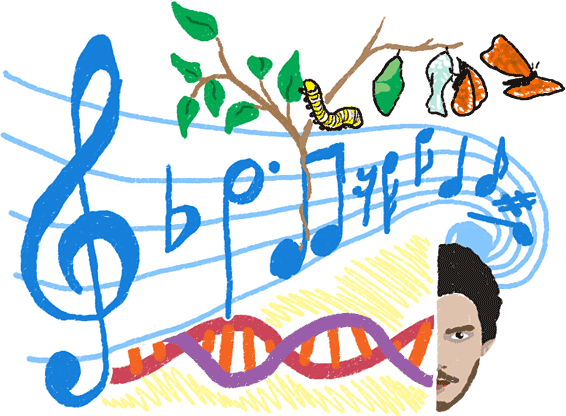
Brilliant ideas come from humanity. (This last practice is out there in left field so bear with me.) Think of life as a rhythm. Life is rhythm condensed and replayed. We are a series of genes turned on and off over time. For example, the puberty genes are turned on when you're 12 or 13. You are a musical score being unraveled in time. The nature of this unravelment is a rhythmical untravelment. Everything is a process of rhythmical repetition.
So what does all that 'hippie philosophy' mean? The easiest way to explain this is that everything has a story. In my article 4 Basic Fundamentals of Marketing, I explain how people love stories. Every project can have a story applied to it; even, for example, a 'boring' corporate website.
Stories have a beginning, a middle, and an end. Music is a good analogy for this concept. Think about how music videos tell a story. Ask yourself: if your project was a music video, what would it be like?
Like I mentioned in the beginning of this article, this is about linking the unrelated. Everything in life is connected. Any random thing you can think of is somehow connected to any other random thing you can think of. Always try to think about how things can be connected. TeeFury makes a living off of this. Their highly successful t-shirt designs combine two seemingly unrelated culture references into an awesome piece.
Conclusion
It takes creativity, whether or not you're an artistic person, to come up with brilliant ideas. Good work in any given project is art. If you approach your work as art then it will become art. You will fuel amazing visions with that vibe and passion. And that is where brilliant ideas are born.
For further reading I recommend the following:





